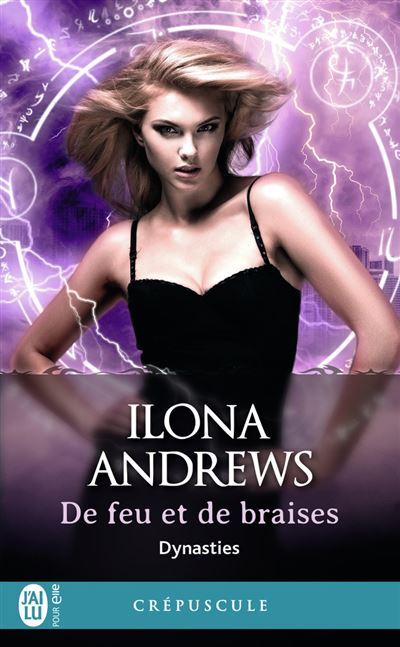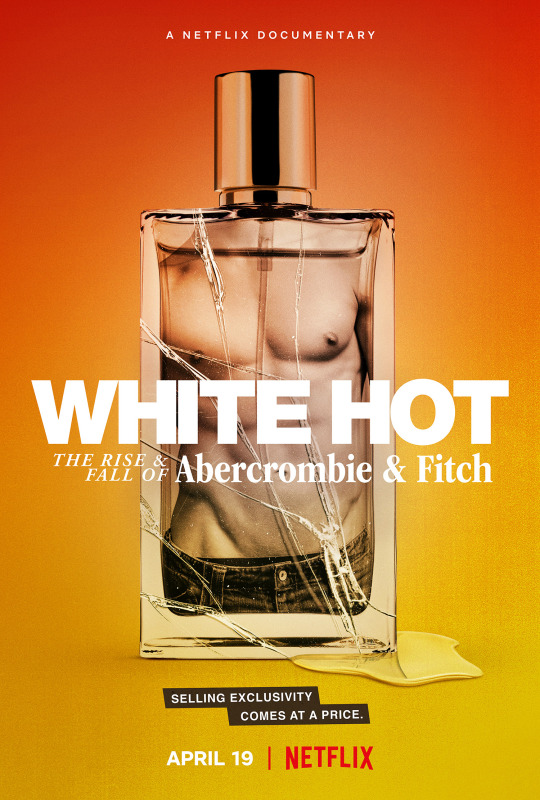#white hot
Text


A naked soul blissfully dancing in the wind.
#Loathe#White Hot#spotify#me#dark#meh#goth girl#metalgirl#metal#goth#shoegaze#dark goth#girls#shoegasm#darkness
38 notes
·
View notes
Text
Sometimes it is true love folks. I just explained to my BFF that white hot was a lot of fun and I liked the romance. Oh and yeah there's a ferret heist
"Why didn't you lead with that??"
24 notes
·
View notes
Photo

J.Scott Campbell - White Hot
9 notes
·
View notes
Photo

“White Hot”
Fantastic Four #21 (December 1963)
Stan Lee, Jack Kirby, George Roussos and Stan Goldberg
Marvel Comics
#Fantastic Four#Stan Lee#Jack Kirby#George Roussos#Stan Goldberg#Marvel Comics#Great Comics#Great Comic Art#White Hot
5 notes
·
View notes
Text
Welcome to Miami 🌴
#photography#miami#florida#nba finals#miami heat#places#travel#my art#miami beach#south beach#miami florida#palm trees#nature#nature lovers#nature photography#tropical#white hot heat#white hot#white hot playoffs#white hot finals#heat#heat nba finals#heat vs nuggets#lionel messi#messi#leo messi#inter miami#inter miami fc#leo messi inter miami#leo messi miami
5 notes
·
View notes
Text
But Eärendil came, shining with white flame, and about Vingilot were gathered all the great birds of heaven and Thorondor was their captain, and there was a battle in the air all the day and through a dark night of doubt.
"The Silmarillion" - J.R.R. Tolkien
#book quote#the silmarillion#jrr tolkien#battle#war#sky battle#birds#eagle#white hot#ship#boat#earendil#vingilot#thorondor
6 notes
·
View notes
Photo

An 18k white gold bouquet ring set with white mother-of-pearl flowers adorned with diamonds.
9 notes
·
View notes
Text
Día 0

- White Hot: The rise and fall of Abercrombie & Fitch. (EU, 2022. Dir. Alison Klayman)
Documental acerca del ascenso y caída de la marca de ropa Abercrombie & Fitch, que en la década de los 90 y principios de la 2000 fue una auténtica seña cultural —hasta que la enorme serie de escándalos que arrastraba tras de sí desde su lanzamiento terminaron por hundirla. Racismo profundamente calado y múltiples cargos de acoso laboral, junto con los testimonios de varios empleados y críticos de la moda.
Entre los finales de la década pasada y los principios de la actual, se ha visto más y más una tendencia critica (o a veces simplemente morbosa) con respecto a marcas y modistos sumamente famosos. Éste documental tiene algo de ambas tendencias. Mucho de su interés es el puro chisme, la marca que tronó por declarar abiertamente los prejuicios de sus dueños. Pero por debajo hay una crítica mas certera: La de la cultura estadounidense, que finalmente adora el poder y la sensación de estar por encima de… de quien sea, porque quienes realmente ostentan el poder, que no son los líderes políticos, no se molestan en asomarse al mundo. Para el consumidor promedio están más bien las fantasías de poder, que se le venden de manera constante, como una invasión.
Así, es tanto un buen entretenimiento como un buen punto de partida para una interesante discusión a propósito de lo que consumimos y de qué maneras.
**
Con esto concluyo el segundo ciclo de 30 películas para sobrellevar la actual pandemia —y comienzo otro ciclo por temas y géneros. Como primer punto de partida: El cine gay, para el mes de Junio.
**
6 notes
·
View notes
Text

I've just discovered urban fantasy romance with The Hidden Legacy series by Ilona Andrews and I am obsessed – obsessed.
There's magic, action, amazing chemistry, and strong female leads.
But this line from Rogan from White Hot made me melt.
I am currently reading Diamond Fire.
#the hidden legacy series#ilona andrews#white hot#house baylor#house rogan#urban fantasy#romance#fantasy romance#love#quotes
5 notes
·
View notes
Text
Ilona Andrews: French covers
I was browsing my local bookstore when I saw it: hidden legacy got a shiny new edition in French!
Now, you guys are probably familiar with the American covers. They're... Well... They exist. And for a long time, the French covers were Just As Bad

Exhibit A: French cover for Burn for Me

Exhibit B: French cover for White Hot

Exhibit C: French cover for Wildfire
But everything changed when the Fire Nation attacked they decided to actually Do A Decent Job for once! Behold, the new edition, an omnibus for Hidden Legacy 1, 2, 3 and 3.5 (with a new translator for some reason I guess):

Look at this! No photoshopped woman or couple in an awkward pose! The other covers put the bar so low that I'm so fucking happy with this one, even though it's completely average!
I was going to end this post on a happy note with the fact that I can now recommend this series to my French friends, but while making this post I discovered that The Inkeeper Chronicles just got published in French too and, well, I have to share it with you

It's ... Bad. Dina looks 15??? The Inn looks like the manor in the Turn of the Screw?? And they named the book The Keeper of the Doors???? Whyyyyy
#ilona andrews#hidden legacy#the inkeeper chronicles#burn for me#white hot#wildfire#emerald blaze#ruby fever#clean sweep#nevada baylor#catalina baylor#dina demille
2 notes
·
View notes
Link
My wife and I just watched White Hot last night, and honestly it was fantastic. My wife started watching it to relax when she got home from work, I watched the first five minutes and then made her pause it, because I was so rapt that I was about to skip my workout to keep watching it. We watched the rest after dinner, and spent the rest of the night (and morning walk) debating it. Watch it if you get the chance, here are our critiques on it.
— How do you read an interview headlined "youth, sex and casual superiority” with quotes like "In every school there are the cool and popular kids, and then there are the not-so-cool kids. Candidly, we go after the cool kids. A lot of people don't belong [in our clothes], and they can't belong. Are we exclusionary? Absolutely.” And not think of Nietzche. How do you look at the displays of beefcake male nudes and hear Bruce Weber talk about restoring the aesthetic glory of Classical Greece, and not think of Friedrich’s modern interpreter BAP?
A&F’s aesthetic was to sell the image of the Blonde Beast, in the literal and philosophical senses. They sold the fantasy of youth, strength, vigor, and total lack of self-reflection; a total spontaneity of desire and the satisfaction of that desire through action. Their marketing tried to use Nietzche’s idea of the natural tendency of the healthy and beautiful and vigorous to self-determine what is cool, by creating an artificial Aristocracy of models and images, then hiring cool local kids as representatives, which then co-opted the locals.
And how do you watch the haters without thinking “pure ressentiment all the way down.” The grand narrative is of an upper class which set its own standards, and a lower class which sought to eliminate the right of the upper class to set its own values if it excluded the lower class.
— A total lack of understanding or acknowledgement of fashion cycles (the Barber Pole for the SSCels). The film portrays the lack of inclusivity in Abercrombie as the prime cause of its ultimate downfall, while ignoring that it was being overtaken by mall-brand aesthetic movements that were equally criticized for being white, exclusionary, and skinny. Lululemon’s sales and Patagonia {aka Fratagonia} were just hitting their stride and going exponential at the same moment that Abercrombie’s sales were peaking and then shrinking. Lululemon and Patagonia have been and continue to be, criticized for being too white and too skinny, and Chip Wilson (Lululemon’s Founder) faced similar criticism to Jeffries for his exclusionary brand aesthetic. The writers of White Hot wanted to tell a story of fat PoC bringing down the big bad white wolf; the real story is an icon in decline being unable to defend itself from the culture vultures once its best days were past it, being beaten down into abandoning its ethic. In the Nietzschean view, the Beautiful and the Good shifted on to Lululemon athleisure and gorpcore, then went right on excluding. Then whatever’s next will come after that.
— The results of the consent decree after their first lawsuit alleging discriminatory hiring practices were dystopian. Abercrombie created two categories of employee: Models and staff. Where before the store simply hired pretty (typically white looking) people because that’s the staff they wanted, now they stated that their front-of-house staff were Models allowing them to use the “casting” exception to employment discrimination law; ugly (often non-eurocentric) staff were relegated to working in the stockroom and avoiding customer interaction. This result was more dystopian than the old system, you had a two tiered employment system that made it clear to the ugly that they weren’t allowed in. A high school girlfriend (coincidentally, Sikh) got a coveted model job there, her obsessed beta-orbiter worked in the back; the psychodrama writes itself. The result of the consent decree was to rub his nose in the difference between him and her every day at work when he wasn’t allowed to come to the front of the store and talk to her, rather than him just getting a job at another store down the way. She told me he literally would get swatted by their manager for coming out of the stockroom to flirt with her, I can't imagine anything more humiliating as a teenage boy. To what extent is forcing inclusion into a space that doesn’t want you always going to have that impact on people, does artificially including you make your exclusion ever more clear?
— How do you talk about a business that was owned by Les Wexner, that was coveted by marketed to and recruited hot teens, and not mention Epstein except as an aside? I don’t know that there was anything else there, I’m no investigative reporter, but I’d love to know if Jeffries and Epstein ever met, if Epstein ever interacted with A&F “models,” if there was ever an effort by Wexner to introduce them? Like how do you have an org that was famous for recruiting hot teenagers, and on the outskirts of it were two all-time modern-Hall-of-Fame tier molesters, and the two worlds never met? I just find it unbelievable.
— Opposition to The Great Replacement theory on the Right has lead to the memory holing of triumphalist minority growth narratives. The narrative of the documentary is A&F rises on a white aesthetic in the 1990s, brave PoC force them to integrate decades later, yay diversity. Between 1990 and today the percentage of white people, especially youths, has declined. Asian Americans have tripled in number since 1990. To what extent does integration simply reflect a business model that worked in 1990 isn’t tenable in 2022 because of changing demographics? That this is ignored in the documentary, where in 2008 it was bragged about by liberals trumpeting 40 More Years, indicates to me that the narrative has shifted, as the Right has repurposed the narrative to galvanize white voters.
-- Overall, it was a fascinating piece, especially the coverage of the aesthetic of beauty and sex that they built. The core question for me is this: Was the feeling that people got from buying and wearing the clothing worth the costs, both economic and moral, that we paid for them? By creating the brand and the feeling, A&F provided value. One talking head on the doc, who would later be a plaintiff suing A&F for discrimination, said she had one A&F shirt which she wore as often as she could to every party. Clearly that had some value for her, and it was created by the very brand-building discrimination she herself would later decry. Is that value redeeming, or is it bad in and of itself, a false happiness that must of necessity lead to more suffering than it is worth?
4 notes
·
View notes
Text

I never thought that Abercrombie & Fitch was important in the 90's or early 2000's because where I live their store was nowhere to be found and maybe because it was expensive that I didn't see many people wearing it. Anyway, White Hot: The Rise and Fall of Abercrombie & Fitch presents something obvious when it comes to the image of the brand through their advertisements in print and video in which they show naked models and suggestive gestures that appeal not just to teens and young adults but mostly to gay patrons. It's relieving to see those who filed a complaint a decade plus ago come back to detail their story and struggle to this new generation of audience how toxic this brand/company/store was. This documentary is an example of how and when cancel culture should be upheld because most of the time this new phenomenon takes place out of the whims of the ignorant and the immature. What's so tragic was that when Abercrombie & Fitch became abusive, the power of social media had not existed yet. The company would have been dead until now. However, it is also shown here that cancel culture cannot entirely kill someone or something and it's not entirely beneficial or good either to the society. Abercrombie & Fitch is still operating until now with their unforgettable and woeful past left outside of the newly managed premises.
#white hot#abercrombie and fitch#netflix#movie review#documentary#cancel culture#discrimination#toxic
2 notes
·
View notes

